 W
WRedBall Project is a public travelling street art piece by US born artist Kurt Perschke. Considered “the world's longest-running street art work” the project consists of a 15 ft inflated red ball wedged in different city spaces in various cities around the world. Placed in a choreographed suite of installations within a city and usually lasting one or two weeks, each specific site lasts only one day. RedBall Project has received strong international media and public attention, and has been featured in several urban art books, art journals, and media.
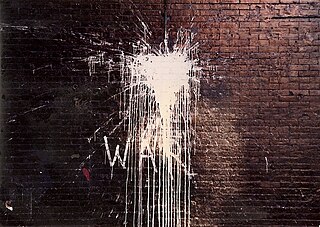 W
WStreet art is unofficial and independent visual art created in public locations for public visibility. Street art is associated with the terms "independent art", "post-graffiti", "neo-graffiti", and guerrilla art.
 W
WA street artist is a person who makes art in public places. Street artists include portrait artists, caricaturists, graffiti artists, muralists and people making crafts. Street artists can also refer to street performers such as musicians, acrobats, jugglers, living statues, and street theatre performers. Street artists can be seen throughout the world.
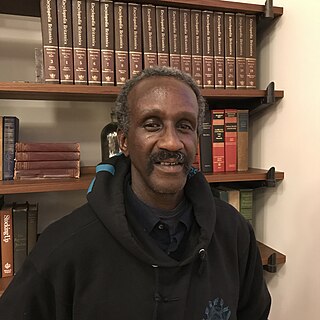 W
WKurt Boone is a New York City-based author known for his work documenting street culture, which includes graffiti, urban cycling, street photography, skateboarding, busking, and spoken word.
 W
WThe Lille Braderie is a braderie, or annual street market/flea market, that takes place on the weekend of the first Sunday of September in the city of Lille, north of France, Hauts-de-France region. Its origins date back to the 12th century and it welcomes between two and three million visitors each year. The Braderie de Lille is one of the largest gatherings in France and the largest flea market in Europe. The braderie counting 100km of display for 10,000 exhibitors.
 W
WCarnival is a Western Christian festive season that occurs before the liturgical season of Lent. The main events typically occur during February or early March, during the period historically known as Shrovetide. Carnival typically involves public celebrations, including events such as parades, public street parties and other entertainments, combining some elements of a circus. Elaborate costumes and masks allow people to set aside their everyday individuality and experience a heightened sense of social unity. Participants often indulge in excessive consumption of alcohol, meat, and other foods that will be forgone during upcoming Lent. Traditionally, butter, milk, and other animal products were not consumed "excessively", rather, their stock was fully consumed as to reduce waste. This festival is known for being a time of great indulgence before Lent, with drinking, overeating, and various other activities of indulgence being performed. For example, Pancakes, donuts, and other desserts were prepared and eaten for a final time. During Lent, animal products are eaten less, and individuals have the ability to make a Lenten sacrifice, thus giving up a certain object or activity of desire.
 W
WStreet children are poor or homeless children who live on the streets of a city, town, or village. Homeless youth are often called street kids or street child; the definition of street children is contested, but many practitioners and policymakers use UNICEF's concept of boys and girls, aged under 18 years, for whom "the street" has become home and/or their source of livelihood, and who are inadequately protected or supervised. Street girls are sometimes called gamines, a term that is also used for Colombian street children of either sex.
 W
WComplex Networks is an American media and entertainment company based in New York City for youth culture which was founded as a bi-monthly magazine Complex by fashion designer Marc (Ecko) Milecofsky. Complex Networks reports on popular and emerging trends in style, sneakers, food, music, sports and pop culture. Complex Networks reached over 90 million unique users per month in 2013, across its owned and operated and partner sites, socials and YouTube channels. The print magazine ceased publication with the December 2016/January 2017 issue. Complex currently has 4.55 million subscribers and 1.3 billion total views on YouTube. As of 2019, the company's yearly revenue was estimated to be circa $200m USD, 15% of which came from commerce.
 W
WCostermonger, coster, or costard is a street seller of fruit and vegetables in London and other British towns. The term is derived from the words costard and monger (seller), and later came to be used to describe hawkers in general. Some historians have pointed out that a hierarchy existed within the costermonger class and that while costermongers sold from a handcart or animal-drawn cart, mere hawkers carried their wares in a basket.
 W
WA crossing sweeper was a person working as a street sweeper who would sweep a path ahead of people crossing dirty urban streets in exchange for a gratuity. This practice was an informal occupation among the urban poor, primarily during the 19th century. It was the focus of fairly intense study and commentary, and attitudes toward the presence of crossing sweepers on city streets varied greatly among urban residents, ranging from appreciation for their work to feelings that they were a public nuisance. Crossing sweepers also found their way into 19th-century fiction and artwork, including a novel by Charles Dickens and a popular painting by William Powell Frith.
 W
WMartin Edward Elkort was an American photographer, illustrator and writer known primarily for his street photography. Prints of his work are held and displayed by several prominent art museums in the United States. His photographs have regularly appeared in galleries and major publications. Early black and white photographs by Elkort feature the fabled Lower East Side in Manhattan, New York City, showing its ethnic diversity, myriad streets and cluttered alleys. The Coney Island amusement park in Brooklyn was another favorite site during that period. His later work depicts street scenes from downtown Los Angeles and Tijuana, Mexico. Throughout Martin Elkort's long career as a photographer, he always showed the positive, joyful side of life in his candid images.
 W
WOn March 24, 2001, Fernando Traverso, an Argentinian hospital worker, political activist, and artist, began spray painting a series of twenty-nine life-sized bicycle stencils throughout the streets of his home town Rosario as a symbolic memorial to his twenty-nine friends who were abducted, tortured and killed during Argentina's Dirty War. Today, there are 350 bici stenciled images painted on buildings throughout Rosario, memorializing each of its 350 citizens who were disappeared under Argentina's military dictatorship and National Reorganization Process (1976–1983).
 W
WStreet fighting is hand-to-hand combat in public places, between individuals or groups of people. Unlike sport fighting, a street fight might involve weapons, multiple opponents, and no rules. The venue is usually a public place and the fight sometimes results in serious injury or occasionally even death. Some street fights can be gang-related.
 W
WA flower seller, normally a woman, traditionally sells flowers on the street. Often the flowers are carried in a basket, for example. The subject matter has been a favorite of artists. The profession has mostly died out in countries like the United Kingdom, but still exists in others such as India.
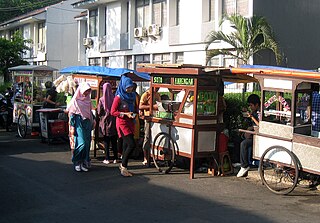 W
WA food cart is a mobile kitchen set up on the street to prepare and sell street food to passers-by. Food carts are often found in cities worldwide selling food of every kind.
 W
WGraffiti is writing or drawings made on a wall or other surface, usually without permission and within public view. Graffiti ranges from simple written words to elaborate wall paintings, and has existed since ancient times, with examples dating back to ancient Egypt, ancient Greece, and the Roman Empire. In modern times, spray paint and marker pens have become commonly used graffiti materials, and there are many different types and styles of graffiti; it is a rapidly developing art form.
 W
WThe Halal Guys is a halal fast casual restaurant franchise that began as halal carts on the southeast and southwest corners of 53rd Street and Sixth Avenue in Manhattan, New York City. New locations, both food cart and storefront, are being added throughout New York and around the world.
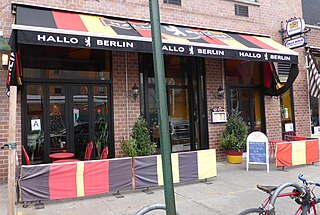 W
WHallo Berlin was a restaurant on Tenth Avenue between West 44th and 45th Streets in the Hell's Kitchen neighborhood of New York City. It consisted of a beer garden restaurant and a street cart. They served authentic German beer and cuisine like frankfurters, sauerkraut, potato pancakes, red cabbage, spätzle, wursts and other foods. Hallo Berlin's motto was: "New York's wurst restaurant." The owners announced the restaurant's closure in June 2017.
 W
WA hawker is a vendor of merchandise that can be easily transported; the term is roughly synonymous with costermonger or peddler. In most places where the term is used, a hawker sells inexpensive goods, handicrafts, or food items. Whether stationary or mobile, hawkers often advertise by loud street cries or chants, and conduct banter with customers, to attract attention and enhance sales.
 W
WHorse rings, remnants of a time when horses and horse-drawn vehicles provided the primary mode of transportation, can be found throughout Portland, Oregon. They were removed from curbs and sidewalks for safety purposes until the late 1970s, when one Portland resident complained about the rings disappearing. Today, the city of Portland helps to preserve the rings by requiring them to be replaced following sidewalk construction or repair.
 W
WAn Ice cream cart is a mobile non-motorized commercial vehicle that sells ice cream as a retail outlet. The Ice cream cart is usually used during the summer and is generally spotted at public space, parks, beaches, schools or drive through neighborhoods. Sometimes a bicycle is attached to the cart, in order to improve its mobility.
 W
WAn ice cream van (British) or ice cream truck (American) is a commercial vehicle that serves as a mobile retail outlet for ice cream, usually during the summer. Ice cream vans are often seen parked at public events, or near parks, beaches, or other areas where people congregate. Ice cream vans often travel near where children play — outside schools, in residential areas, or in other locations. They usually stop briefly before moving on to the next street. Along the sides, a large sliding window acts as a serving hatch, and this often displays pictures of the available products and their prices. Most ice cream vans tend to sell both pre-manufactured ice pops in wrappers, and soft serve ice cream from a machine, served in a cone, and often with a chocolate flake, a sugary syrup, or toppings such as sprinkles. While franchises or chains are rare within the ice cream truck community, some do exist.
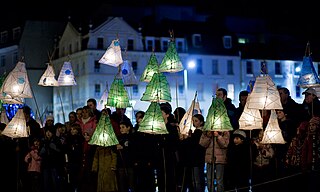 W
WAn illuminated procession is a procession held after dark so that lights carried by the participants form a spectacle. The lights will commonly be of the same type, so making a candlelight procession, lantern parade or torchlight march.
 W
WAn improvised weapon is an object that was not designed to be used as a weapon but can be put to that use. They are generally used for self-defence or if the person is otherwise unarmed. In some cases, improvised weapons are commonly used by attackers in street fights, muggings, murders, gang warfare, during riots, or even during insurgencies, usually when conventional weapons such as firearms are unavailable or inappropriate.
 W
WStreet magic falls into two genres; traditional street performance and guerrilla magic.
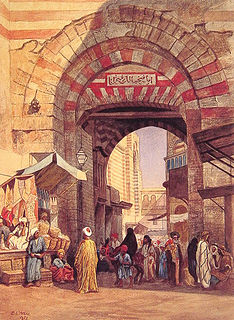 W
WA market, or marketplace, is a location where people regularly gather for the purchase and sale of provisions, livestock, and other goods. In different parts of the world, a market place may be described as a souk, bazaar, a fixed mercado (Spanish), or itinerant tianguis (Mexico), or palengke (Philippines). Some markets operate daily and are said to be permanent markets while others are held once a week or on less frequent specified days such as festival days and are said to be periodic markets. The form that a market adopts depends on its locality's population, culture, ambient and geographic conditions. The term market covers many types of trading, as market squares, market halls and food halls, and their different varieties. Due to this, marketplaces can be situated both outdoors and indoors.
 W
WA market stall is a typically immobile, temporary structure erected by merchants to display and shelter their merchandise in a street market or other setting. Stalls are easily erected, taken down or simply moved on wheels. The same type of stall is also used as a display area at fairs and conventions.
 W
WHenry Mayhew was a journalist, playwright, and advocate of reform. He was one of the co-founders of the satirical magazine Punch in 1841, and was the magazine's joint editor, with Mark Lemon, in its early days. He is also known for his work as a social researcher, publishing an extensive series of newspaper articles in the Morning Chronicle that was later compiled into the book series London Labour and the London Poor (1851), a groundbreaking and influential survey of the city's poor.
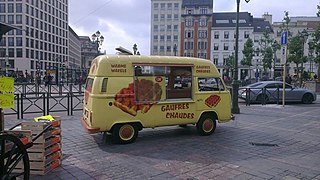 W
WMobile catering is the business of selling prepared food from some sort of vehicle. It is a feature of urban culture in many countries. Mobile catering can be performed using food trucks, trailers, carts and food stands. Many types of foods may be prepared. Mobile catering is also used to provide food to people during times of emergency.
 W
WIn Hong Kong, mobile stalls are used by the street hawkers to sell inexpensive goods and street food, like eggettes, fishballs and cart noodles since the 1950s. This style of selling is part of Hong Kong traditional culture. It reflects people’s ways of living and their spirits. In recent years, the operation of the mobile stalls faces challenges due to the government policies and modernization.
 W
WA street organ played by an organ grinder is an automatic mechanical pneumatic organ designed to be mobile enough to play its music in the street. The two most commonly seen types are the smaller German and the larger Dutch street organ.
 W
WA block party or street party is a party in which many members of a single community congregate, either to observe an event of some importance or simply for mutual solidarity and enjoyment. The name comes from the form of the party, which often involves closing an entire city block to vehicle traffic or just a single street. Many times, there will be a celebration in the form of playing music, games and dance and activities like inflatable slides, popcorn machines and barbecues.
 W
WStreet Pastors is an interdenominational network of Christian charities that operates worldwide.
 W
WA peddler, in British English pedlar, also known as a is a traveling vendor of goods.
 W
WStreet prostitution is a form of sex work in which a sex worker solicits customers from a public place, most commonly a street, while waiting at street corners or walking alongside a street, but also other public places such as parks, benches, etc. The street prostitute is often dressed in a provocative manner. The sex act may be performed in the customer's car, in a nearby secluded street location, or at the prostitute's residence or in a rented motel room.
 W
WStreet reclaiming is the process of converting, or otherwise returning streets to a stronger focus on non-car use — such as walking, cycling and active street life. It is advocated by many urban planners and urban economists, of widely varying political points of view. Its primary benefits are thought to be:Decreased automobile traffic with fewer automobile accidents and less smog Reduced summer temperatures due to less asphalt and more green spaces Increased pedestrian traffic which also increases social and commercial opportunities Increased gardening space for urban residents Better support for co-housing and infirm residents, e.g. suburban eco-villages built around former streets
 W
WRoad cycling is the most widespread form of cycling. It includes recreational, racing, commuting, and utility cycling. Road cyclists are generally expected to obey the same rules and laws as other vehicle drivers or riders and may also be vehicular cyclists.
 W
WŠpancirfest is a street festival that is held every year since 1999 in Varaždin, Croatia, and lasts for 10 days.
 W
WStreet cries are the short lyrical calls of merchants hawking their products and services in open-air markets. The custom of hawking led many vendors to create custom melodic phrases. During the 18th and 19th century, the street cries of major urban centers became one of the distinctive features of city life. Street cries became popular subject matter for poets, musicians, artists and writers of the period. Many of these street cries were catalogued in large collections or incorporated into larger musical works, preserving them from oblivion.
 W
WA street fair celebrates the character of a neighborhood. As its name suggests, it is typically held on the main street of a neighborhood.
 W
WThe Streetlife Festival in Munich is a mixture of street festival, environmental exhibition and fair. It takes place every year over two weekends in May / June and September. The venue is Leopoldstraße and the Ludwigstraße - from Georgenstraße to the Odeonsplatz. At the same time, Munich celebrates another traditional street festival, which connects to the Streetlife festival to the north: the Corso Leopold.
 W
WStreetMekka is a 2,200 square metre indoor venue for street sports and street culture in the Kongens Enghave district of Copenhagen, Denmark. The activities include Street basketball, parkour, dance, street soccer, street art, beat production, and DJing. It is situated at Enghavevej 82 D, adjacent to Copenhagen Skatepark.
 W
WA street sweeper or street cleaner may refer to a person's occupation, or a machine that cleans streets. A street sweeper cleans the streets, usually in an urban area.
 W
WUtility box art is a form of street art whereby utility boxes on city streets are painted or otherwise covered in artwork.
 W
WWild Style is a 1982 American hip hop film directed and produced by Charlie Ahearn. Released theatrically in September 1982 by First Run Features, it is regarded as the first hip hop motion picture. The film included seminal figures such as Fab Five Freddy, Lee Quiñones, Lady Pink, The Rock Steady Crew, The Cold Crush Brothers, Queen Lisa Lee of Zulu Nation, Grandmaster Flash and ZEPHYR. The protagonist "Zoro" is played by New York graffiti artist "Lee" George Quiñones.